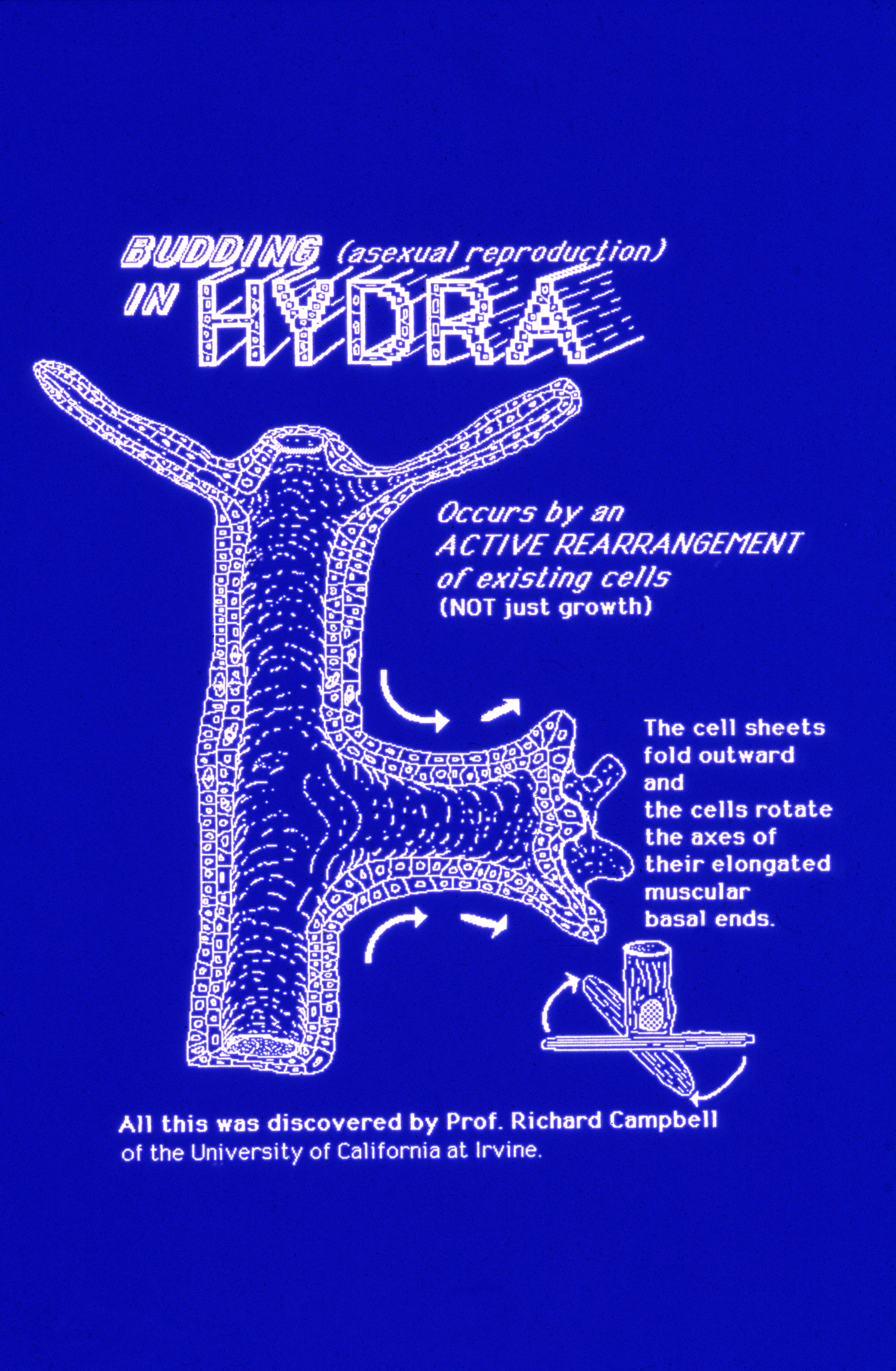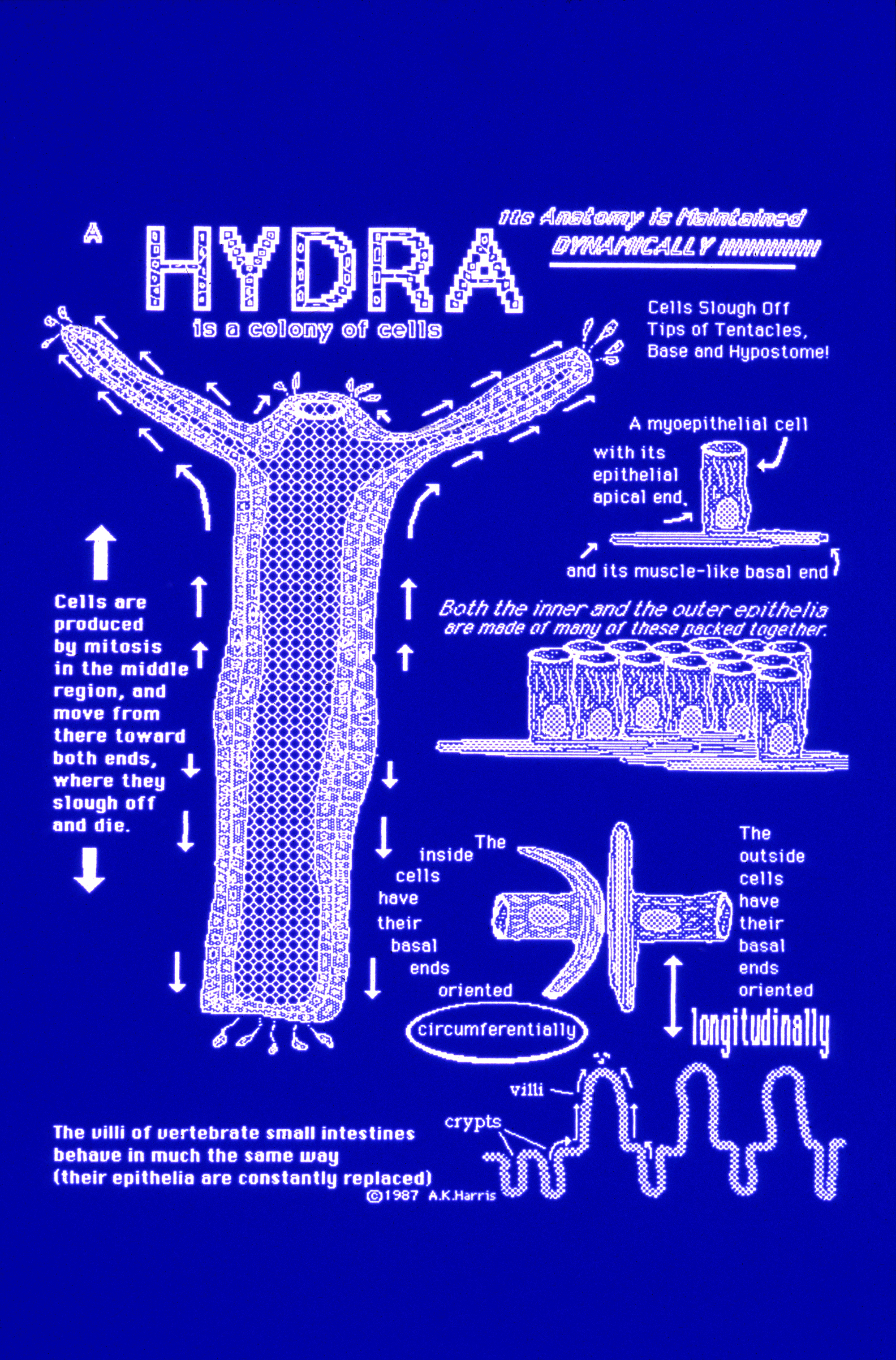Making Tubes; Rearrangement vs. "Growth"
First, a recap of the video of sponge rearrangementsNote the formation of channels in the sponge by rearrangement of existing cells.
How do Hydra cells arrange themselves into hollow cylinders?
Nobody knows! Nobody even knows how to find out! (Perhaps by contracting with greater force in the circumferential direction than in the longitudinal direction?)
Until such questions can be answered for animals as simple as Hydra, what chance is there the problem can be answered for cylindrically-arranged human cells? (Blood vessels, ducts, glands etc.)

Note that the cells have epithelia at the top, and a muscular layer at the bottom.

Budding is rearrangement, but people say "they grow," as if enlargement were the cause of the rearrangement.
Mostly it doesn't occur to people that you can have massive changes in shape without oriented mitotic divisions.
There are many cases of perpendicular alignment of structures, for example a set of fibers running circumferentially and a set running longitudinally.

Epithelial tubes forming in an intestine. Some form inward, and others form outward.

Air capillaries in a bird lung. These are the functional equivalent of alveoli in mammalian lungs. Note the similarity to the tubules in Hydra.
We talked previously about heart bypass operations, where a section of a vein is removed from a leg and sutured to the heart to carry blood around a blocked artery. Think about what would be needed to induce formation of a new blood vessel to bypass the blocked one, rather than surgically creating one.
Remember the animation of blood vessels forming (the camera lucida tracings by Clark, 1918). Blood vessels are extended and retracted. Some get bigger, and others with no blood flow shrivel up.
Artery and vein development is a matter of cell rearrangement. A network would still be formed with no mitoses. What properties do these cells have that cause them to form hollow tubes? Remember this diagram?

Tension in the outside surface, and a consistent ratio or force in the longitudinal vs. the cylindrical direction.